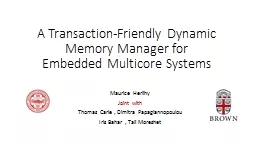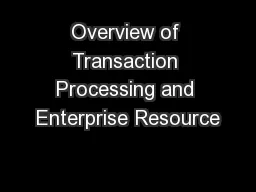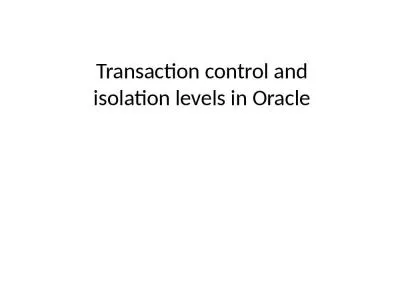PPT-Transaction Management:
Author : olivia-moreira | Published Date : 2015-11-19
Crash Recovery part 2 CS634 Class 21 Apr 23 2014 Slides based on Database Management Systems 3 rd ed Ramakrishnan and Gehrke Motivation Atomicity Transactions
Presentation Embed Code
Download Presentation
Download Presentation The PPT/PDF document "Transaction Management:" is the property of its rightful owner. Permission is granted to download and print the materials on this website for personal, non-commercial use only, and to display it on your personal computer provided you do not modify the materials and that you retain all copyright notices contained in the materials. By downloading content from our website, you accept the terms of this agreement.
Transaction Management:: Transcript
Download Rules Of Document
"Transaction Management:"The content belongs to its owner. You may download and print it for personal use, without modification, and keep all copyright notices. By downloading, you agree to these terms.
Related Documents














